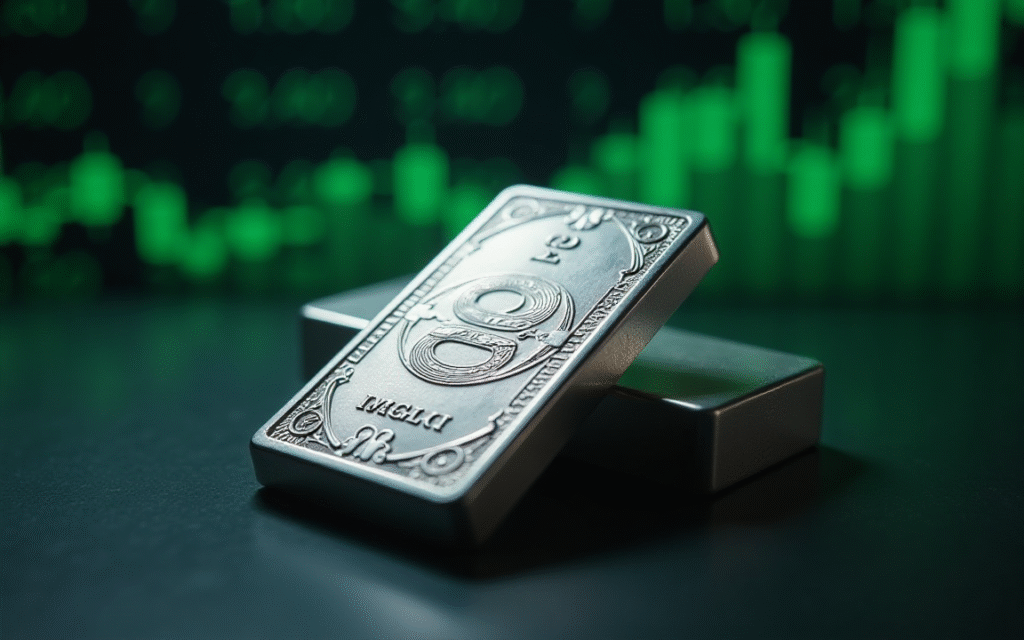Platinum has emerged as the best-performing precious metal in 2025, surging 47% year-to-date and posting a remarkable 10% gain over the past week.
On July 11, 2025, the metal traded between $1,415 and $1,456.54 per ounce, marking an 11-year high and signaling a decisive breakout from a decade-long consolidation range.
The move places platinum ahead of silver (+29.6%) and gold (+27%) in terms of performance, underscoring its growing appeal amid tightening supply and strengthening demand fundamentals.
This explosive rally reflects a combination of structural supply constraints, rising industrial usage, and investor positioning.
As other metals consolidate near recent highs, platinum’s momentum has accelerated, fueled by increasing recognition of its unique supply-demand dynamics.
Persistent supply deficits drive price momentum
The fundamental backdrop for platinum is increasingly tight. Global supply is projected to fall short of demand by 689,000 ounces annually through 2029, making it one of the most structurally imbalanced markets in the precious metals space.
Current mine production sits at approximately 5.4 million ounces, while annual demand has climbed to 7.6 million ounces, driven by both traditional and emerging industrial applications.
The supply side faces significant pressure, particularly from South Africa, which accounts for 70% of global platinum output.
Nearly half of the country’s mines are currently operating at a loss, limiting the ability of producers to respond quickly to higher prices.
This financial stress, coupled with persistent energy and infrastructure challenges, has created a fragile production environment.
Unlike gold or silver, platinum’s above-ground stockpiles are relatively limited, and supply expansion is unlikely in the short term.
The combination of constrained mining operations and rising demand suggests the current rally may have further room to run, despite short-term volatility.
Industrial demand adds a new growth vector
While platinum’s traditional use in automotive catalytic converters remains a cornerstone of demand, new growth avenues are strengthening the metal’s outlook.
In particular, platinum’s role in hydrogen fuel cells has emerged as a key driver of future demand.
As the global push toward decarbonization intensifies, fuel cell technology is gaining traction across transportation and energy sectors, increasing the metal’s strategic importance.
This transition adds a durable layer of demand that complements its established industrial and investment appeal.
With investor focus increasingly turning to materials critical to green energy infrastructure, platinum’s dual role as a precious and industrial metal is attracting renewed attention.
Despite lacking the speculative fervor seen in gold or silver, platinum’s price surge reflects a broader revaluation of its market fundamentals.
With sustained deficits projected and little flexibility in the supply chain, the metal may continue to outperform its peers.
Outlook: strong fundamentals amid rising volatility
While platinum’s long-term fundamentals remain supportive, investors should expect increased volatility as prices test key resistance levels.
The breakout from a multi-year consolidation zone and the strong weekly momentum suggest more upside potential.
However, profit-taking and macroeconomic uncertainty—particularly around global growth and interest rate policy—could inject short-term pressure.
Nonetheless, with constrained supply, rising industrial usage, and growing investor interest, platinum appears poised to maintain its leadership position in the 2025 precious metals rally.
The post Platinum surges to 11-year high powered by supply deficits and industrial demand appeared first on Invezz
